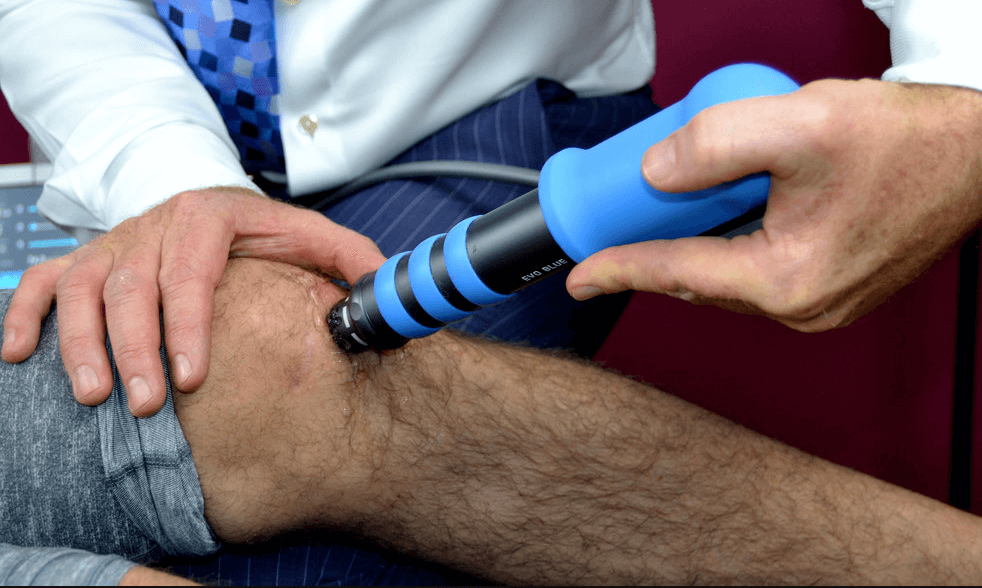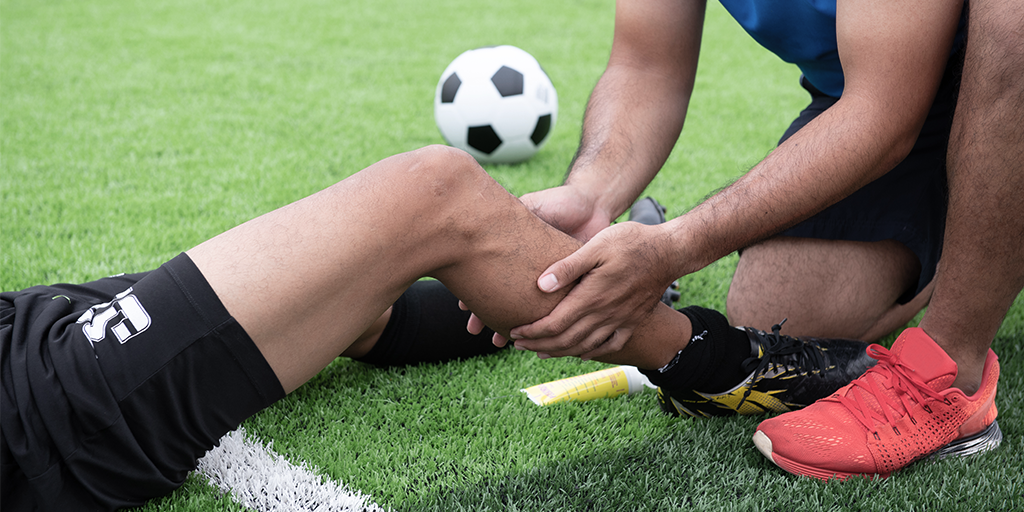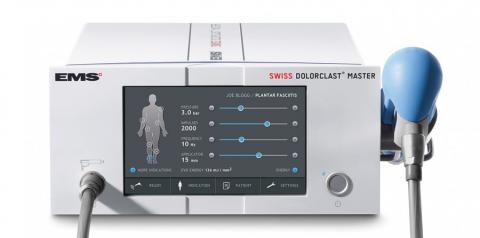
How Physiotherapy Helps with Knee Pain
The knee joint is one of the most active joints in the human body, which implies that knee discomfort is a typical occurrence. It has the power to sabotage even the most mundane aspects of everyday existence. It only has the ability to do two things: flex and extend. Bones, cartilage, tendons, and ligaments make up the intricate structure, all of which are prone to damage, injury, and degeneration. Physiotherapy is one of the quickest and safest methods to regain your strength and get back on the road to recovery if you are suffering from knee discomfort.
What is Physiotherapy?
In addition to physical therapy and rehabilitation, there are numerous different terms for physiotherapy (rehab). It's designed to take the pain out of aching muscles and joints. Your knee injury will be the focus of your first session of physiotherapy with a physical therapist.
When it comes to treating injuries to the joints and muscles of the body without surgery, physiotherapists are the go-to experts. They assist you in regaining your health by evaluating your knee injury and recommending a course of therapy.
Our physiotherapist Dr. Kian at Phoenix Physio Clinic can treat your knee discomfort in a variety of ways, including:
- Dry Needling
- Radial Shockwave Therapy
- Cold Laser Therapy
- Therapeutic Ultrasound
- Interferential Electrotherapy (IFC)
- Stretches and Exercises
- Manual Muscle Release
- Joint Mobilizations
Types of Knee Pain
Knee pain can be described in different stages:
Acute: Most severe pain. Occurs 1-7 days after injury. Use R.I.C.E. (rest, ice, compression, elevation) before beginning regular activity.
Sub-Acute: 2-6 weeks after injury. Mild but noticeable pain. Start using a gentle motion with the knee to help regain lost mobility.
Chronic: Greater than 8-12 weeks. It is time to speak with a Physiotherapist and begin a treatment plan.
Knee Pain Location
The location of knee discomfort may help to identify the knee structures that are causing the problem, allowing for the most appropriate therapy to be administered. Speak with your physiotherapist if symptoms are severe or increase during treatment.
-
Front of Knee: It's possible that there's an issue with the kneecap tracking and positioning.
An inflamed tendon surrounding the kneecap and shin may make it difficult to kneel or walk up a flight of stairs.
-
Inside of Knee: The medial meniscus or medial collateral ligament is the most common cause
of this kind of damage. Athletic activity, osteoarthritis of the knee, and normal wear and tear are all causes
of knee injuries.
-
Outside of Knee: Outside knee discomfort may be caused by a variety of things. Athletic activity,
ITB stress, or stress on the hamstring tendons may cause them.
-
Back of the Knee: A hamstring strain or a baker's cyst may be to blame for your discomfort
(abnormal swelling of the back of the knee joint).
Treatments
Everyone's symptoms and condition are distinct, thus each therapy should be tailored to fit that. To help you recover as quickly as possible, our physiotherapist Dr. Kian at Phoenix Physio Clinic uses a hands-on manual treatment technique in each session.
Radial shockwave therapy, electrotherapy, exercise and stretching are a few of the treatment options available.
Duration and frequency of therapy are based on the results of your first assessment and commitment to treatment as a whole. You should be able to adjust your treatment plan depending on how well you're doing.
It's critical to have the right diagnosis and treatment the first time you go to physiotherapy. Dr. Kian will ask you questions about your symptoms, triggers, and medical history, as well as any therapies you've had in the past.
After gathering the appropriate data, he will do a physical examination, including gait analysis, range of motion testing, strength testing, balance testing, and any further tests considered necessary.
In light of the results of the assessment, Dr. Kian will recommend an individualized treatment plan. It is possible to get treatment both in the office and at home, such as knee exercises to complement the work done by your doctor in the office.
Strengthening and improving knee mobility may be achieved by regular exercise. It's critical that you follow through with your treatment plan and do any exercises prescribed by your physiotherapist.
Exercises to help your knee pain include but are not limited to:
- Quad Stretches
- Calf Raises
- Squats
- Hamstring Curls
- Glute Bridges
- Step-Ups
- Balance Exercises
Your progress is monitored throughout your treatment and will be adjusted based on your improvement.
Treatments to supplement exercises include:
- Dry Needling
- Radial Shockwave Therapy
- Cold Laser Therapy
- Therapeutic Ultrasound
- Interferential Electrotherapy (IFC)
- Soft Tissue Therapy
- Kinesiology Taping
- Soft Tissue Massages or Knee Joint Mobilization
Your physiotherapist formulates a treatment protocol with various specialized techniques and exercises to help you heal from your injuries quicker and help prevent the injury from reoccurring.

How Long Does It Take for Your Knee to Improve?
Knees play an important role in a wide range of physical activities such as walking, stair climbing, standing and squatting, and jumping. Every element of one's life might be adversely affected by persistent knee pain. You may avoid knee issues and preserve mobility by working with your physiotherapist to keep your knee joint strong and flexible.
Hands facing downward and elbows straightened, behind a chair, behind the back of the chair. Lift the chair if you can.
Soft tissue healing might take anywhere from six to eight weeks when dealing with an injury. Depending on the extent of the damage and the presence of any underlying issues, your therapy may run that long or include an additional two weeks.
Symptoms and suffering from osteoarthritis may last a lifetime and need ongoing monitoring in order to avoid their worse. Knee osteoarthritis is treated specifically at Phoenix Physio Clinic.
The Phoenix Physio Way
We at Phoenix Physio Clinic take great satisfaction in providing physiotherapy that is focused on the needs of each individual patient. Every patient deserves our undivided attention, which is why we exclusively provide private physiotherapy sessions.
When required, our physiotherapists collaborate with our on-site chiropractors and massage therapists.
It allows you to go back to doing what you love! Make sure you mention this article when you CALL (905) 832-1110 so that we may give you 50% off your initial assessment.

Direct Insurance Billing
Phoenix Physio Clinic is pleased to offer Direct Billing to the majority of Canadian insurance companies in Ontario. Once you provide us with your extended benefits insurance information, we can submit your treatment costs for direct reimbursement, saving you time and reducing your out-of-pocket expenses. We offer this service at no extra charge. The insurance companies use the phrase "direct billing" to describe when a service provider bills a client directly. Healthcare providers may charge an insurance company for services they perform directly, such as physiotherapy, massage therapy, chiropractic or naturopathic doctor, by directly charging the insurance company. It relieves the patient of the burden of completing all of the necessary paperwork. In other words, it simplifies the task of submitting insurance claims.

Spinal Osteoarthritis
Low back discomfort affects up to 80% of the population. In osteoarthritis, cartilage degeneration is a frequent source of low back discomfort (tissue covering the joint surfaces at the ends of bones).

Guide To Golfer's Elbow
Medial epicondylitis is commonly called golfer's elbow or thrower's elbow. Inflammation, discomfort, and irritability occur in the tendons on the inside of the forearm, resulting in this condition. Golfer's elbow is caused by overuse of the hand, wrist, forearm, and elbow. People with this problem are often seen to be swinging a golf club or other things repeatedly. In addition to using a computer or doing yard labour, this might lead to the condition. It's especially dangerous for athletes who do a lot of overhead work, as well as for carpenters and plumbers. In males, golfer's elbow is more frequent beyond the age of 35 than it is in younger ones. Unlike tennis elbow, it is not as frequent (lateral epicondylitis). For those suffering from medial epicondylitis, a physiotherapist at Phoenix Physio Clinic can assist alleviate discomfort and increase the elbow's range of motion and strength.

What Is Dry Needling?
It's possible that you've heard about dry needling and wondered what precisely it is or whether it's a therapy that may benefit you. Even though dry needling's name may seem eerie, it is safe, non-invasive, and often helpful in treating musculoskeletal conditions. Physiotherapists who are trained and qualified in dry needling may provide the treatment. Neuromuscular discomfort and movement limitations may be alleviated by using a small monofilament needle that penetrates the skin and addresses underlying trigger points in the muscles. What is a "trigger point"? It's a local contraction or tight band of muscle fiber that disrupts function, restricts range of motion and causes discomfort or soreness in the affected area. Increasing blood flow and decreasing both local and referred pain are all possible outcomes of dry needling a damaged muscle or trigger point.

All You Need to Know About Tennis Elbow
Inflammation of the tendons that connect the forearm muscles to the outside of the elbow is known as tennis elbow. Overuse of the forearm muscles and tendons, as well as those surrounding the elbow joint, is a common cause of this condition. Lateral elbow discomfort or lateral epicondylitis, which is not necessarily connected to tennis, is sometimes known as "tennis elbow." Repetitive muscular usage is a common cause of tendonitis in tennis players. Tennis elbow affects half of all tennis players at some point in their careers. Approximately 1 to 3 percent of the population in Canada is estimated to suffer from tennis elbow (Canada). Between the ages of 30 and 50, it is most common. A source that you can trust.

Return to play after treating acute muscle injuries in elite football players.
Return to play after treating acute muscle injuries in elite football players. 2021-06-15 Morgan JPM, Hamm M, Schmitz C, Brem MH. Return to play after treating acute muscle injuries in elite football players with radial extracorporeal shock wave therapy. J Orthop Surg Res. 2021 Dec 7;16(1):708. doi: 10.1186/s13018-021-02853-0. PMID: 34876172; PMCID: PMC8650394.

Dose-related effects of radial extracorporeal shock wave therapy for knee osteoarthritis: a randomized controlled trial
Over 13.000 DolorClast® shock-wave devices are installed worldwide and are continuously employed in conducting scientific research. In fact, with 34 out of 62 randomized Controlled Trials listed in the PEDro database, the DolorClast® devices are used in more studies than any other ESWT device. In this list of clinical evidence, the following study triumphs, due to the fact that it demonstrates the extent to which treatment outcomes are dose-dependent.

